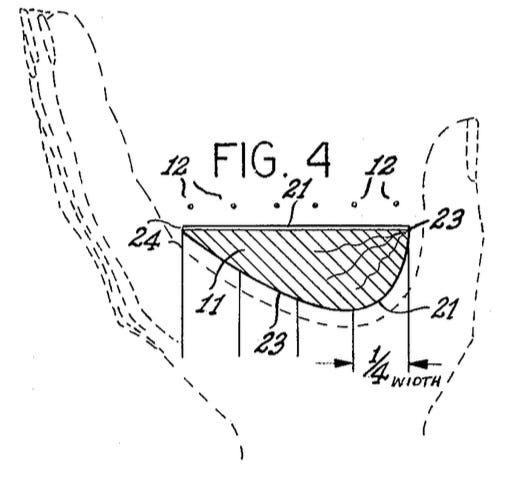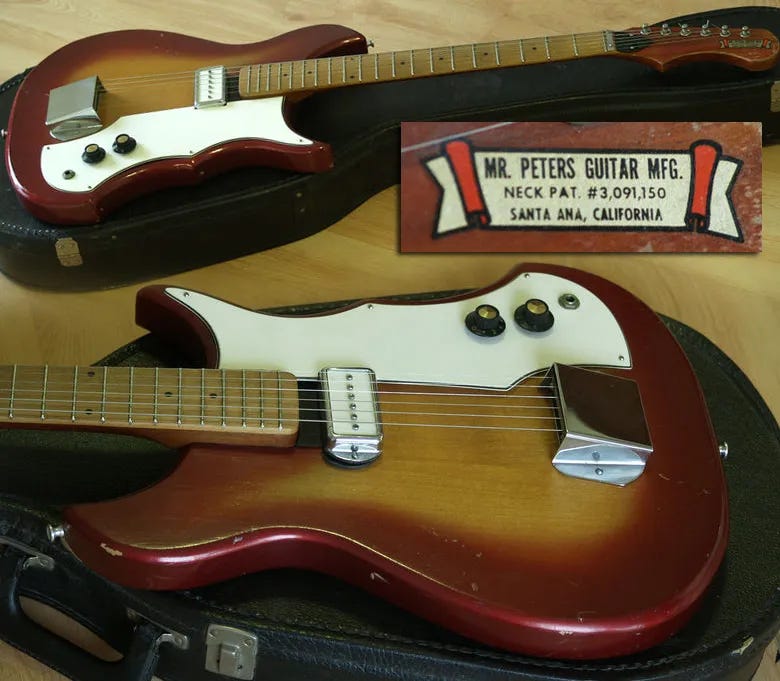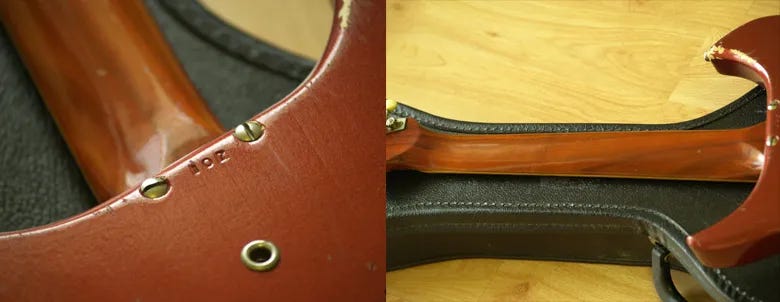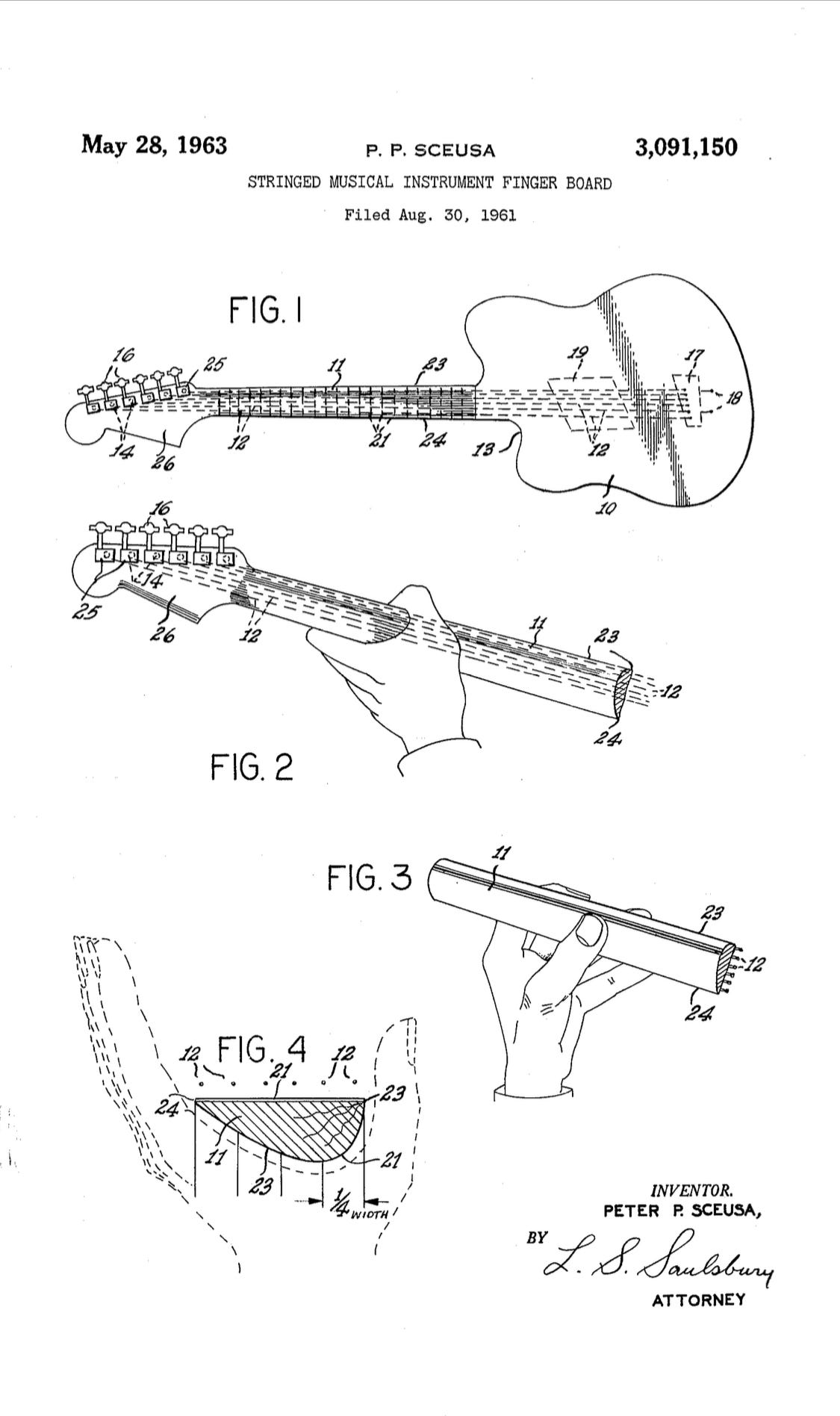“It is the principle object of the present invention to provide…an electric guitar…which can be more easily played by students and women with small hands and wherein the neck…will be of a shape that will conform to the hand…to permit the fingers to more easily and readily reach the strings on the top of the neck while at the same time, the thumb is guided on the thickened side of the neck.”
—From US Patent 3,091,150 Stringed Musical Instrument Finger Board, Peter Sceusa
I tried to pull out the key points from the patent application above, but this illustration should make it even more clear what the Sceusa neck was trying to do:

In hindsight, it sure looks like Rickenbacker was obsessed with the “small hands” market in the late 50s-early 60s! Starting in 1957 we had three short-scale solidbodied guitars (click HERE to learn more about the 900/950/1000 solidbodies), designed for “women and students”, joined the very next year by short-scale semi-hollowbodied Capris with multiple pickup/tailpiece options, and then in 1963 by the “Sceusa neck”.
Peter Sceusa applied for a patent on his design in 1961, which he received in 1963, and (it is believed) in anticipation of that patent he began using the “Mr. Peters” guitar below to shop the idea around.

You may note the Santa Ana, California location on the label and jump to the conclusion that Rickenbacker built this prototype. That’s unlikely—there is nothing even remotely “Rickenbacker” about the design, components, or construction of this guitar. What’s far more likely is that Sceusa started shopping the design locally, and found a ready buyer right in his backyard.
Rickenbacker licensed the design in 1963 and began offering it as an option almost immediately. But it wasn’t selected often—there are only 7 examples on the register—and it didn’t last long, with the last entry on the register dating to April, 1965.
I’d show some photos, but it just doesn’t photograph well. The best picture to explain how it looks I could find was actually of the Mr. Peters prototype:

You can kinda see the offset “high point” at the heel where the neck is bolted. Sadly for Mr. Sceusa, no other major manufacturers licensed the technology, the concept never caught on, and it disappeared quickly. But did it disappear forever?

Tell me that the Strandberg “EndurNeck” isn’t a twisted Sceusa neck—I dare you! Yeah, it has those weird flat surfaces, and yeah, the shape changes as it moves up the neck, but in the “cowboy chord” area it fits the hand just like the Sceusa neck. Justice for Peter Sceusa!

For more commonly used Rickenbacker lingo, check out the glossary of terms found HERE.



